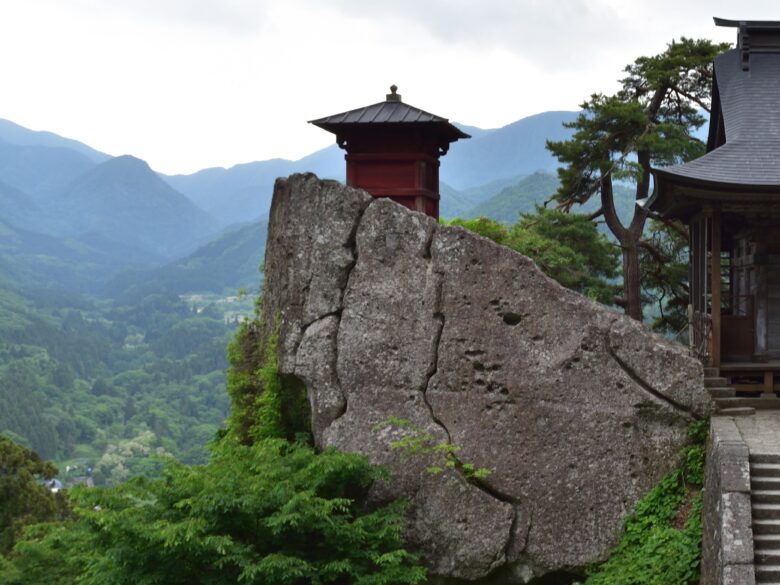In Yamagata, there are three temples known as the “Three Famous Temples of Dewa.
They are Yamadera Risshakuji Temple for cutting off bad relationships, Jionji Temple for rejuvenation, and Wakamatsuji Temple for marriage.
Among them, Yamadera Risshakuji Temple is well known throughout Japan for Matsuo Basho’s haiku “Kayasaya (quietness), Iwani-no-Simiiru (the sound of cicadas penetrating rocks).
This time, at the end of May, when the temple was in its fresh green foliage, I made a pilgrimage from in front of Yamadera Station to the inner sanctuary at the top of Yamadera Mountain.
Date of visit: May 24, 2024
- Basic Information on Risshakuji Temple
- pilgrimage
- But first, let’s eat and walk.
- Yamadera Trailhead
- Konpon Chudo Hall
- Hie Shrine
- Basho statue / Café in front of the gate / Nenbutsu-do (Buddhist prayer hall) / Belfry
- Finally, the mountain gate!
- shrine building where old women reside (Ubado)
- Hyakjo-iwa and Shisundo Road
- Cicada Mound and Mida Cave
- Niomon Gate and the rocky area of Shugyo
- Kaisando-Nokyo-do, Nokyo-do, Godaido
- And then to the inner sanctuary.
- Conclusion
Basic Information on Risshakuji Temple
Outline of Risshakuji Temple
Name: Hoshuzan Risshakuji Temple
Denomination: Tendai sect
Founded: AD 860
Founded by Jikaku Daishi Ennin
Main deity: Yakushi Nyorai
Benefit:good health/prevention of bad luck/breakup of bad relationships
Official website of Risshakuji Temple
Origin : excerpt from the official website
It protects the immortal Dharma lamp of Saicho, which was divided from Enryaku-ji Temple, The temple continues the constant practice of sutra copying, which was handed down by the founder Jikaku Daishi, with a four-year cycle.
In AD 1689, haiku master Matsuo Basho visited the area during his travels along the Oku-no-Hosomichi trail, and left his famous poem, “Quietness and the sound of cicadas permeating rocks”.
Even today, the temple is one of the most sacred mountains in the Tohoku region, with more than 30 large and small halls and pagodas, including the Nemoto-chudo Hall, and a precinct area of 330,000 tsubo (1.2 acres).
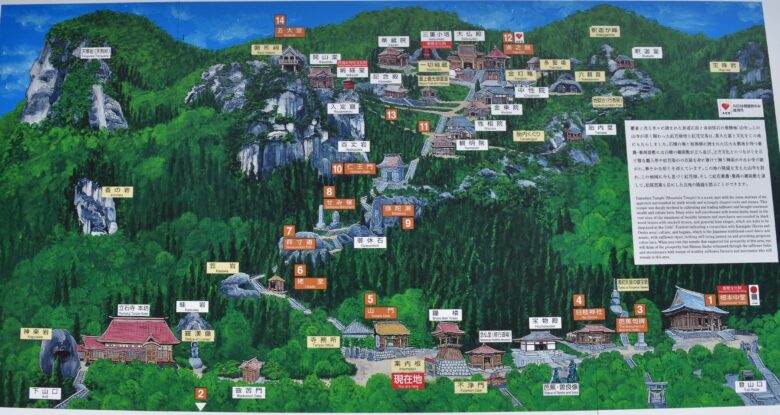
Blessings for breaking off bad relationships
Yamadera has long been believed to be a temple for severing bad relationships.
Although the exact origin of the temple is not known, the following is a theory.
- Blessing of Yakushi Nyorai enshrined in Konpon Chudo Hall at the foot of the temple.
It is said that Yakushi Nyorai protects people from bad things in various places and breaks off bad relationships. - Ties to the mundane world are severed at Ubado, halfway up the stone steps.
Uba-do Hall is said to be the entrance to the Pure Land, where hell is below and paradise is beyond, and passing through this hall is said to cut off bad karma. - Climb up to the innermost part of the temple to pray and break off bad relationships.
It is said that as one climbs each of the 1015 long stone steps, one’s troubles are gradually extinguished and purified.
When I actually climbed the mountain temple, it was quite majestic and something about it all made sense to me.
Location/Hours of worship/Access
Address : 4456-1 Yamadera, Yamagata-shi, Yamagata 999-3301
Hours of visitation:
Mon entrance reception 8:00-16:00
(8:00-15:00 from December to March)
Closed: Open all year round
Entrance fee: Adults ¥300
Access
When using a cab
Distance and time from each facility to Yamadera when going by cab
- From Yamagata Airport
14.6 km, 27 min. - From Yamagata Station
8.8 km, 18 minutes - From Tendo Station
14.2 km, 32 min.
When going by train
If you are going by train, change at Yamagata Station to the JR Senzan Line.
The nearest station is Yamadera Station on the JR Senzan Line.
From Yamadera Station, it is a 450-meter walk (6 minutes) to the Risshakuji Yamadera trailhead.
View from Yamadera Station
Yamadera Station is located on the opposite bank of the Tachigaya River from Yamadera and is directly in front of the station, a short distance away from Yamadera, so it offers a panoramic view of Yamadera and makes a great photo opportunity.
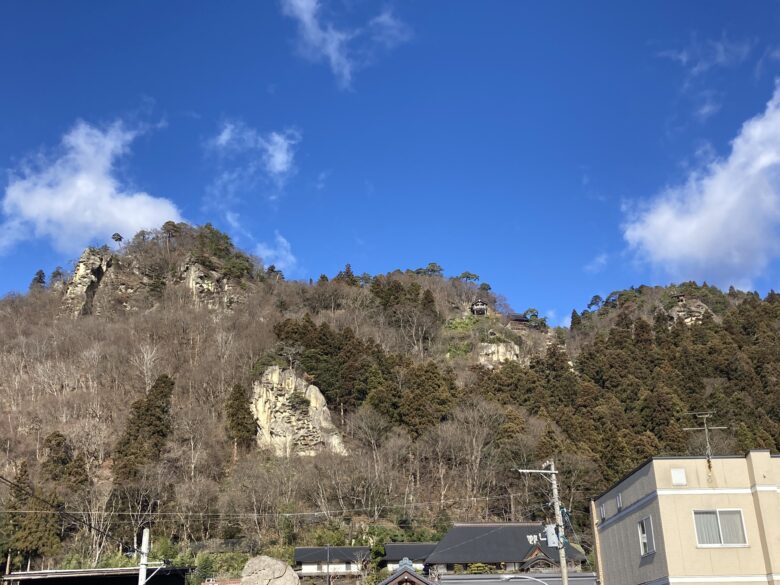
From here to the gate town, there is a wealth of things to see and do, including restaurants, souvenir shops, and the old Yamadera Hotel, a nationally registered tangible cultural property, which is sure to lift your spirits.
The view across the red bridge over the Tachitanigawa River to Yamadera is beautiful and refreshing.
My favorite restaurant is “Yamagata Soba No Enzo” in front of the station.
pilgrimage
But first, let’s eat and walk.
Since I came all this way, I walked around eating a bit of Yamadera’s specialties.
Basho-yaki dango (baked dumplings) at Facing Stone
After crossing the red bridge over the Tachigaya River, we will not head for the trailhead, but for the facing stone on the opposite side.
This is because the “Rest Area Facing Stone” by the Facing Stone has a favorite specialty, “Basho-yaki Dango” (basho-yaki dumplings).
My recommendation is definitely the sesamiso (sesame paste)!
Sweet and sour, sticky baked botamochi! Super delicious!
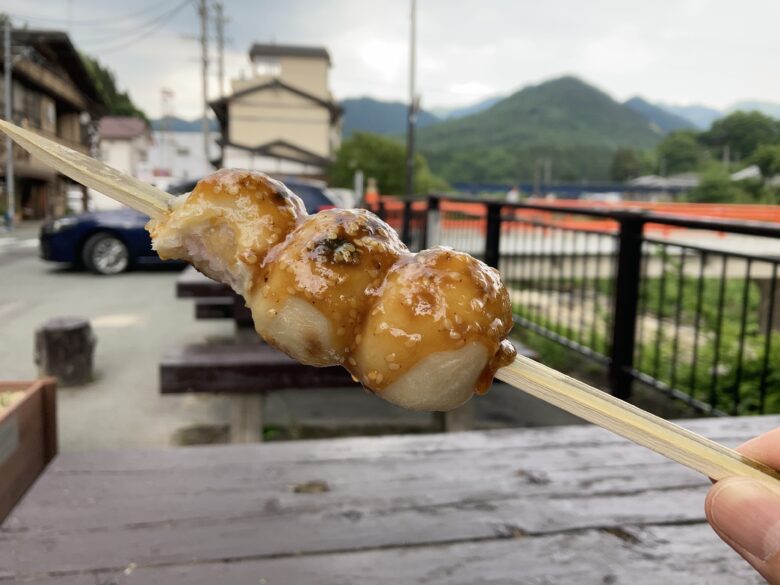
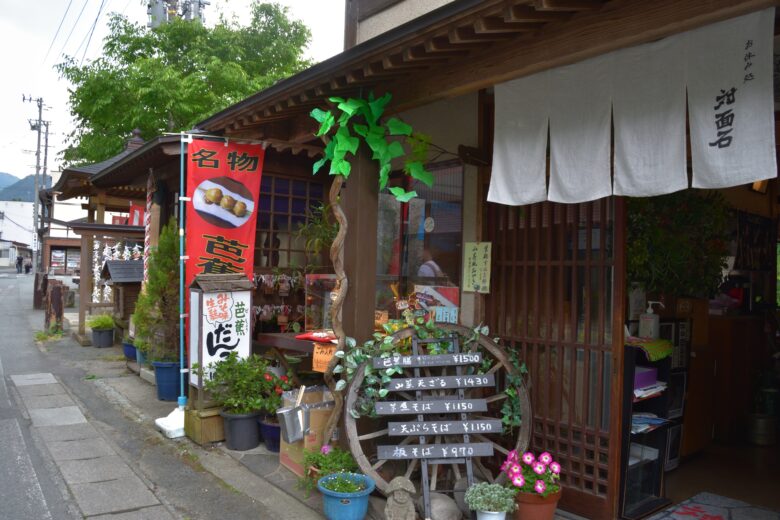
You can buy it at the counter of the store.
You can eat inside the store, but I prefer to eat on the terrace next to the facing stone.

Facing stone and shrine.
It is said that if you place your left hand on the facing stone behind the shrine and pray, you will face good things.
Cherry soft serve ice cream from Fumotoya
This time, I was going to head for the Yamadera trailhead! I thought I was going to, but then I had to stop.
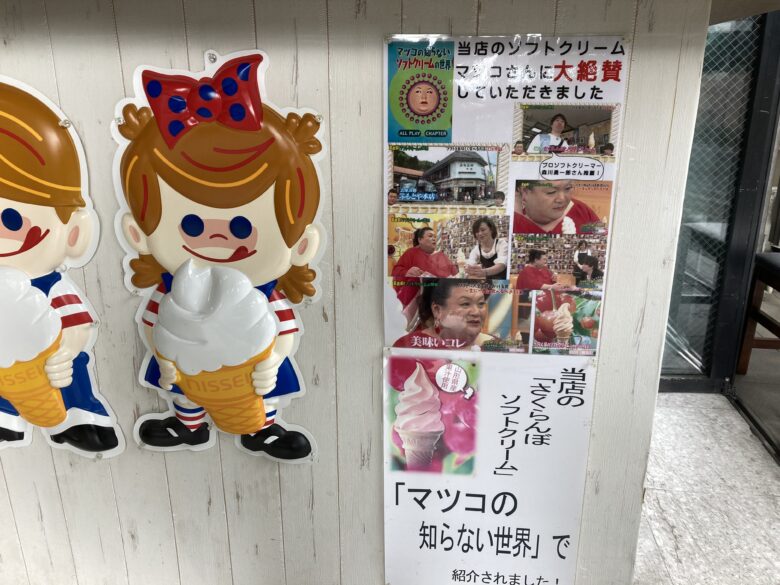
What’s this?
The soft serve ice cream that was highly praised on TV!
That’s why we had it.

Exquisite sweetness that does not disappoint and does not kill the taste of the cherries. It is perfect.
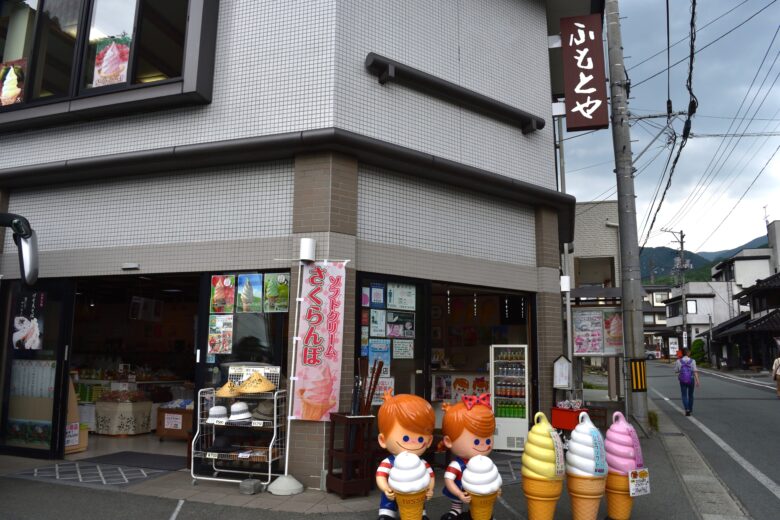
The restaurant is on the left as you proceed toward the Yamadera trailhead.
Yamadera Trailhead
At the end of the approach is the Yamadera trailhead.
The stairs here are also quite impressive, but this is not one of the 1015 stone steps.
It is a sobering experience.

Konpon Chudo Hall
Climbing the stairs at the entrance to the mountain temple, you will suddenly see the Konpon Chudo Hall, the main hall of the entire Risshakuji Temple.
Here, the “Immortal Lamp” from Enryaku-ji Temple on Mt. Hiei and the Risshaku-ji Temple’s principal image “Yakushi Nyorai” are enshrined, and a large Mandala of the Vajrayana Realm and Mandala of the Womb Realm are hung in front of the hall on both sides.
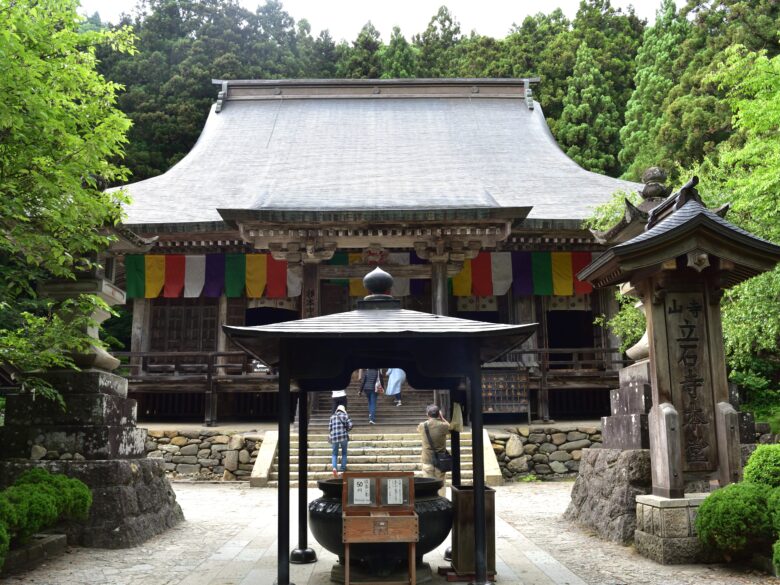
Yakushi Nyorai (Medicine Buddha) is a deity who protects people from illness and misfortune.
Since I had been floundering about being a gourmet until a few minutes ago, I was not prepared for the sudden appearance of the great lord.
I should have paid more serious attention to the temple.
Hie Shrine
Proceeding through the Nemoto-chudo Hall to the temple gate, you will see Hie Shrine.
This shrine is the general guardian of the Yamadera.

At Hie Shrine, there is a “Turtle Shell Stone” which is said to have a miraculous power of longevity, and it is said that if you write your name on a coin and leave it, your wish will come true.
Many coins were offered to the stone.
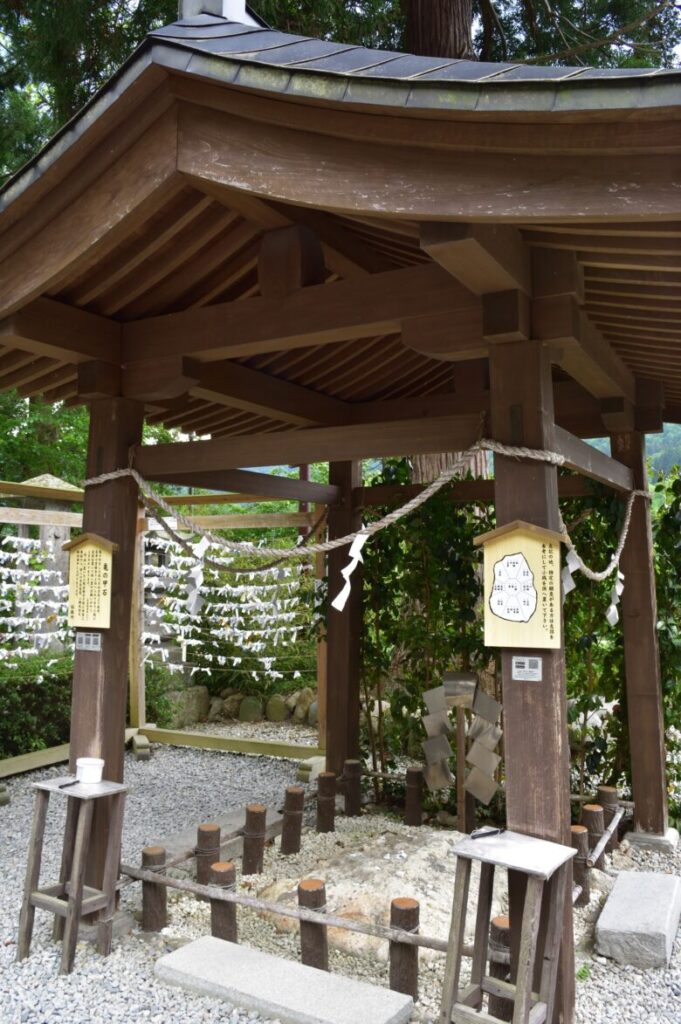
Basho statue / Café in front of the gate / Nenbutsu-do (Buddhist prayer hall) / Belfry
Further on, there were life-size statues of Matsuo Basho and his student Sora.
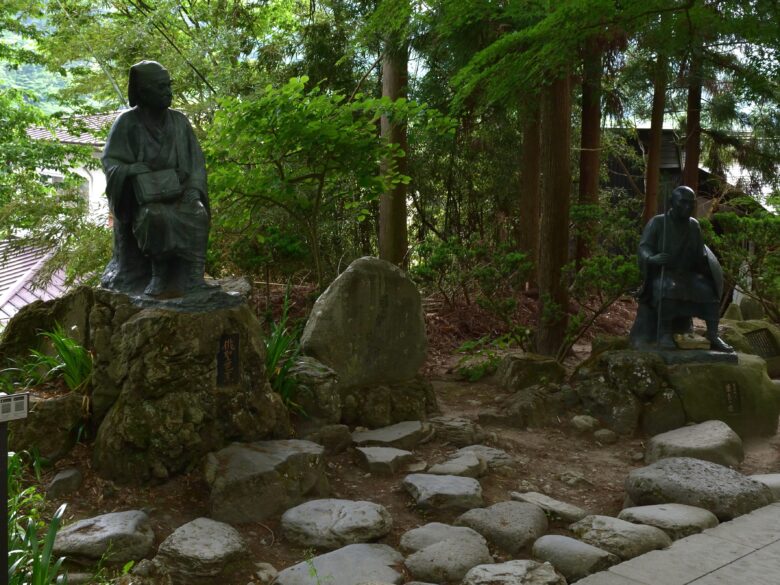
Beyond that is the Monzen Cafe on the left and the Nenbutsu-do (Buddhist prayer hall) and bell tower on the right.
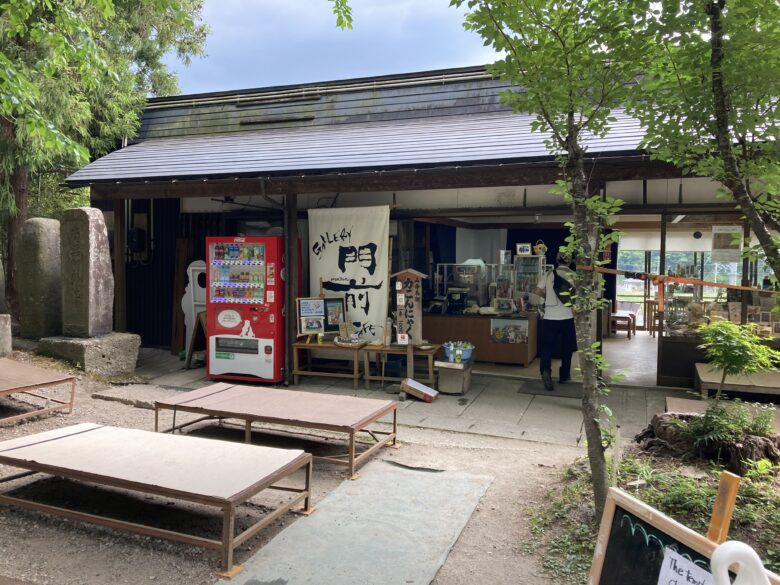
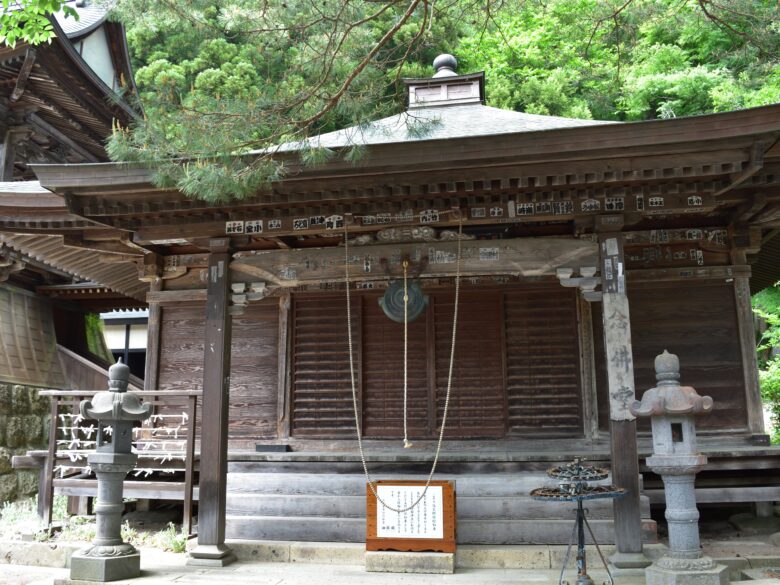
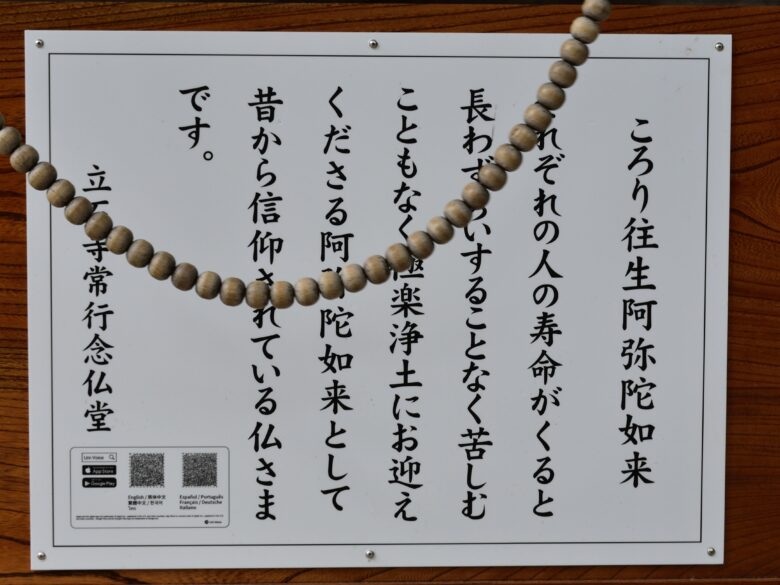
Passing away as if asleep. That’s what I want to be.
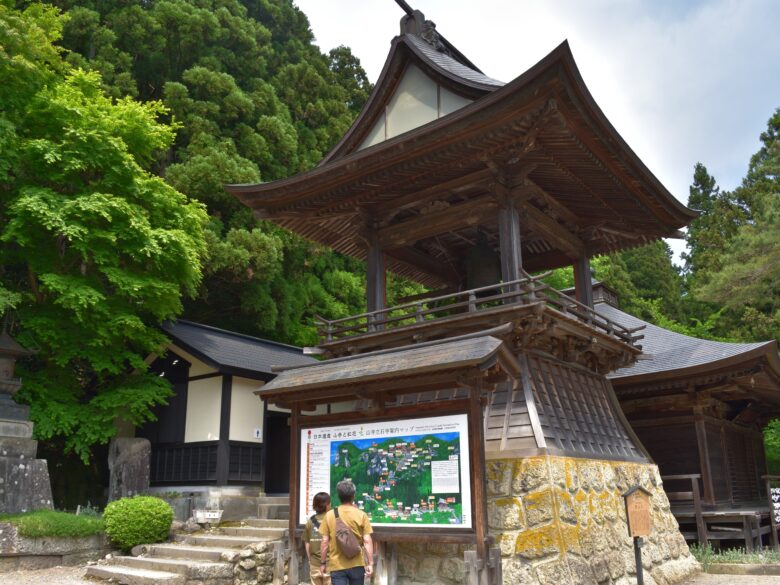
Wait a minute! A cafe in front of the gate, he said!
Another gourmet food is on the menu. Yes, we got “Chikara-konnyaku, a specialty of Yamadera.
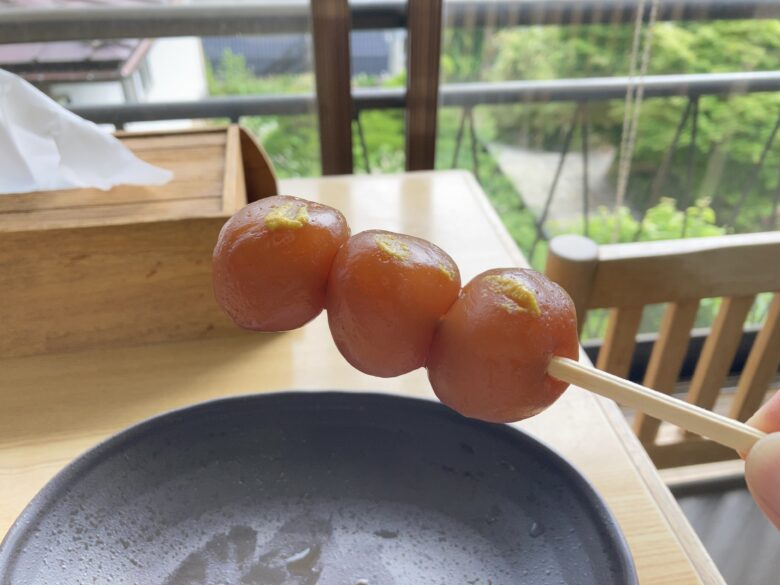
Finally, the mountain gate!
The temple has been full of sights up to this point, but now it is time to go through the gate and climb up to the mountain.
The 1.5-hour round-trip ascetic training begins.
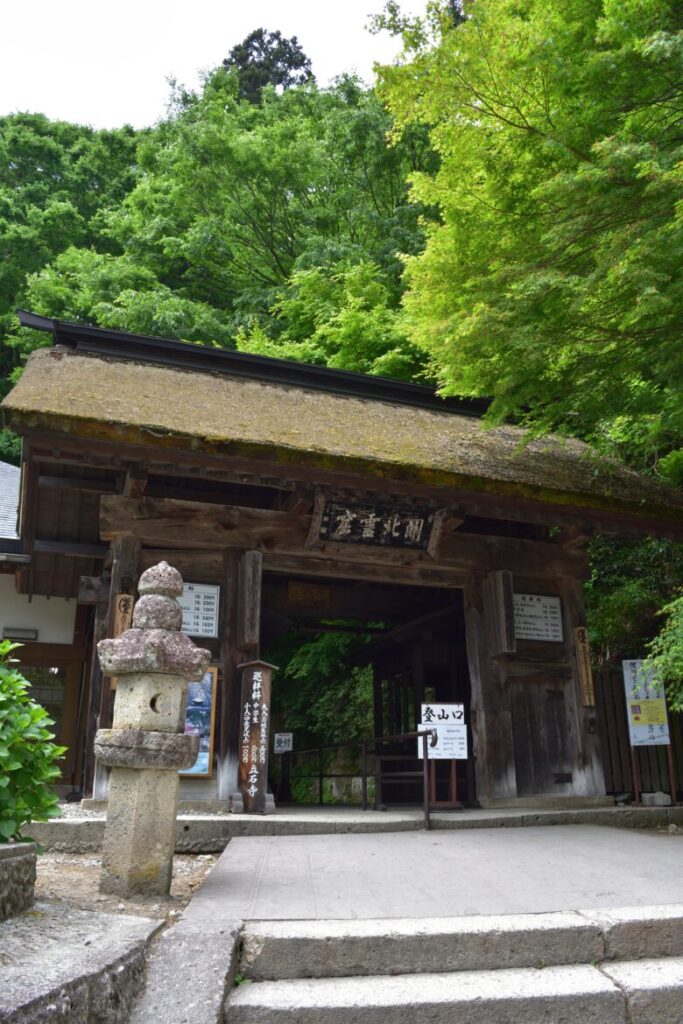
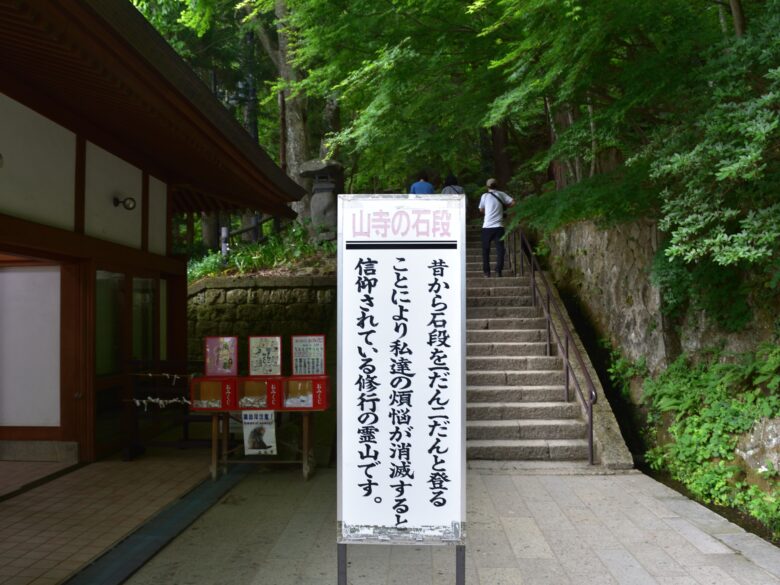

shrine building where old women reside (Ubado)
This is the Jodo-guchi, the border between hell and paradise.
Inside the hall, a rather scary-looking Rugoribaba sits.
This is one of the power spots for cutting off bad relationships.
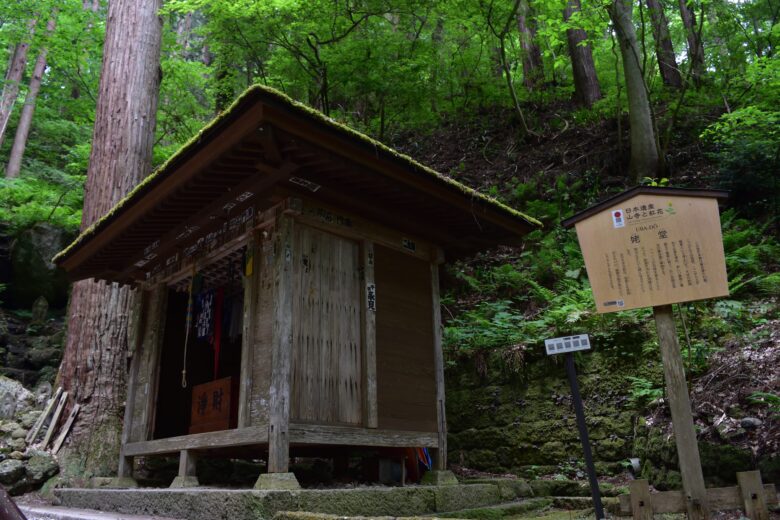
Hyakjo-iwa and Shisundo Road
Climbing up after Ubado, the path narrows to a four-sided path with a minimum width of 15 cm.
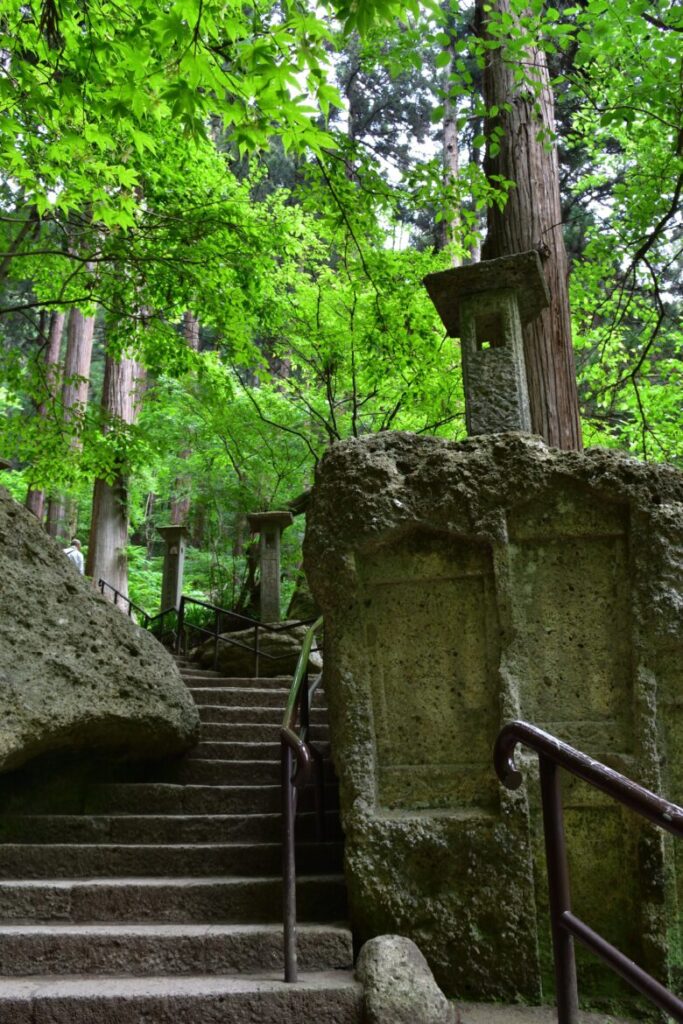
On the left side of the shisundo road rises Hyakjo-iwa, where Godai-do, Nokyo-do, and Kaizando stand above.
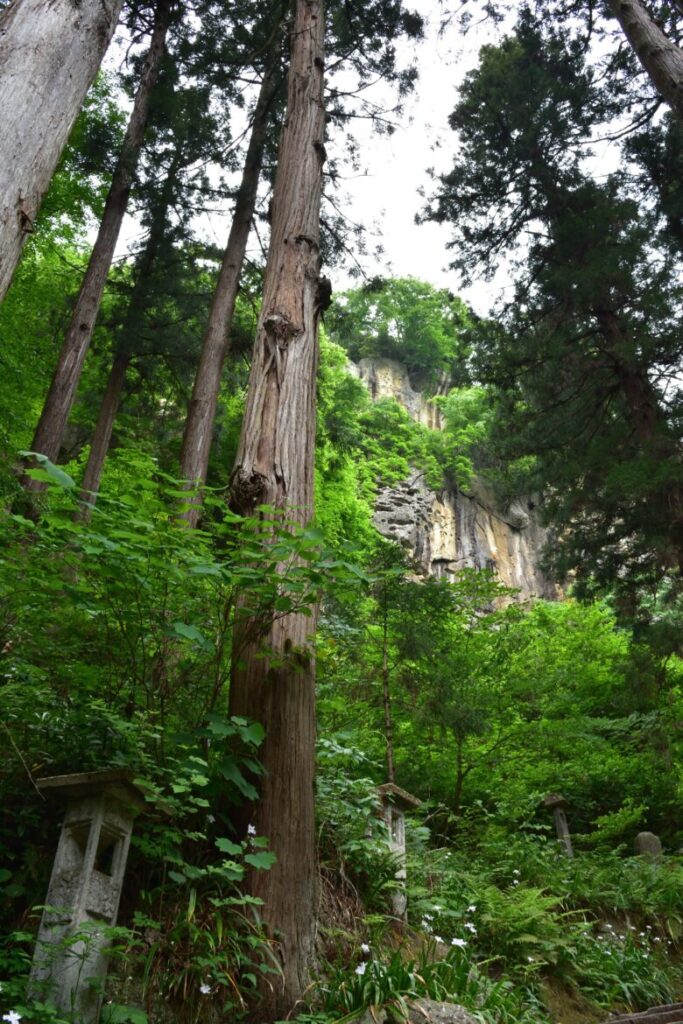
Cicada Mound and Mida Cave
Semizuka is a mound where Matsuo Basho buried a strip of paper with his haiku on the spot where he supposedly got the idea for his haiku.
It was indeed a place that seemed to seep into the rocks.

The Amida refers to the Amida Nyorai, and it is said that over a long period of time, the wind and rain have worn away the rocks, revealing the 1.6 meter (4.8 m) figure of the Amida Nyorai.
It is said that happiness will be bestowed upon those who are able to see the image of the Buddha.
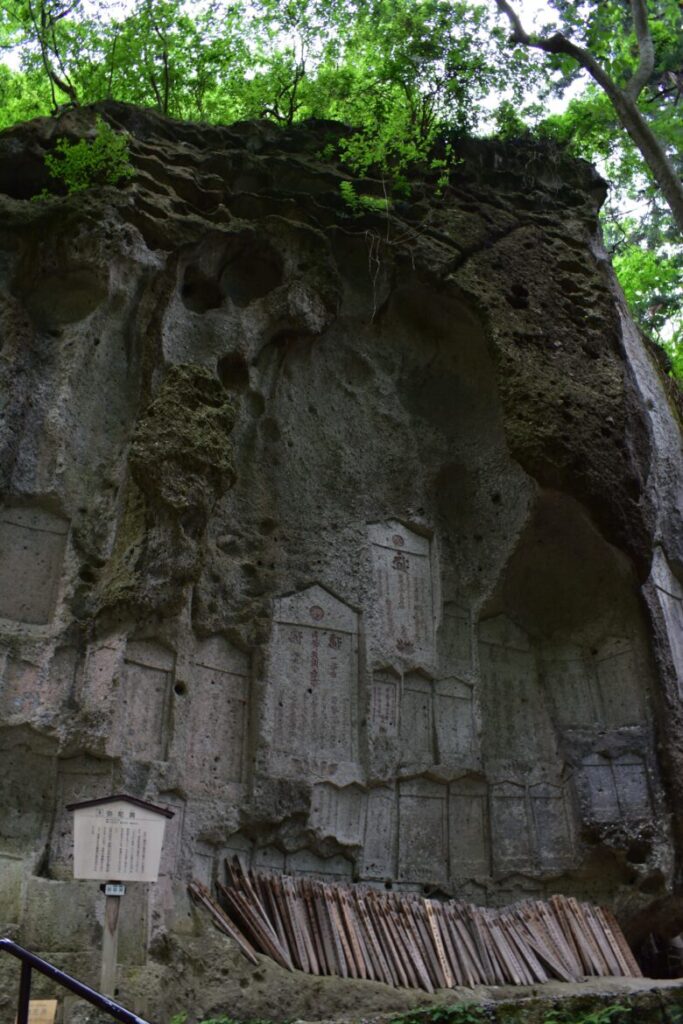
Yes, I did. I could kind of see it.
Niomon Gate and the rocky area of Shugyo
The Niomon Gate blocks the way as if guarding the mountain top.
The Nio statues on either side of the gate glare at the visitors to prevent anyone with evil intentions from passing through.
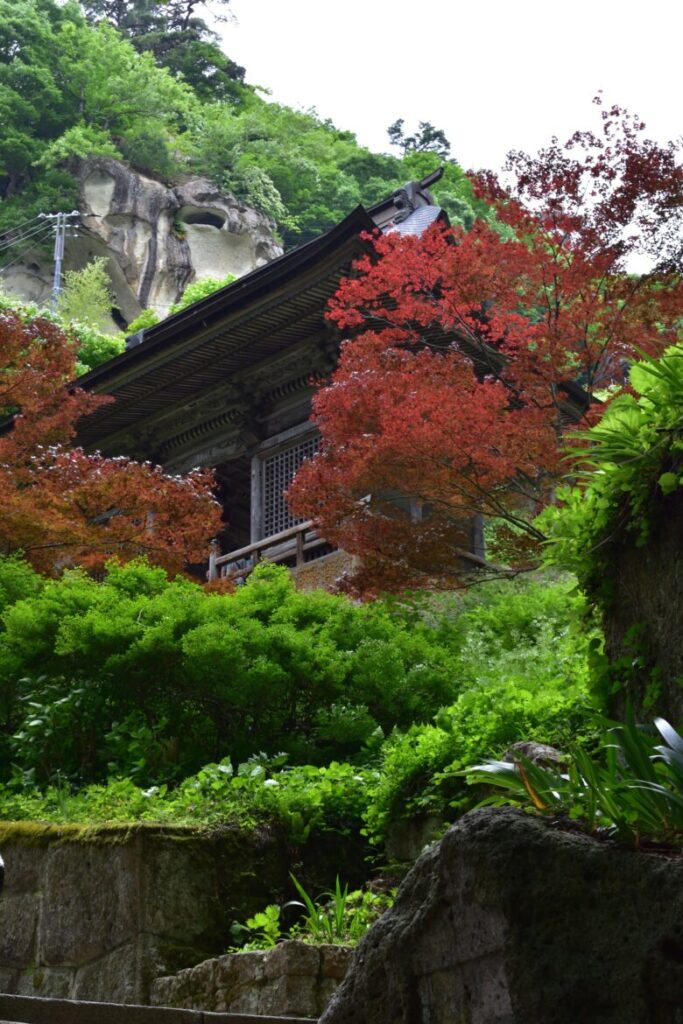
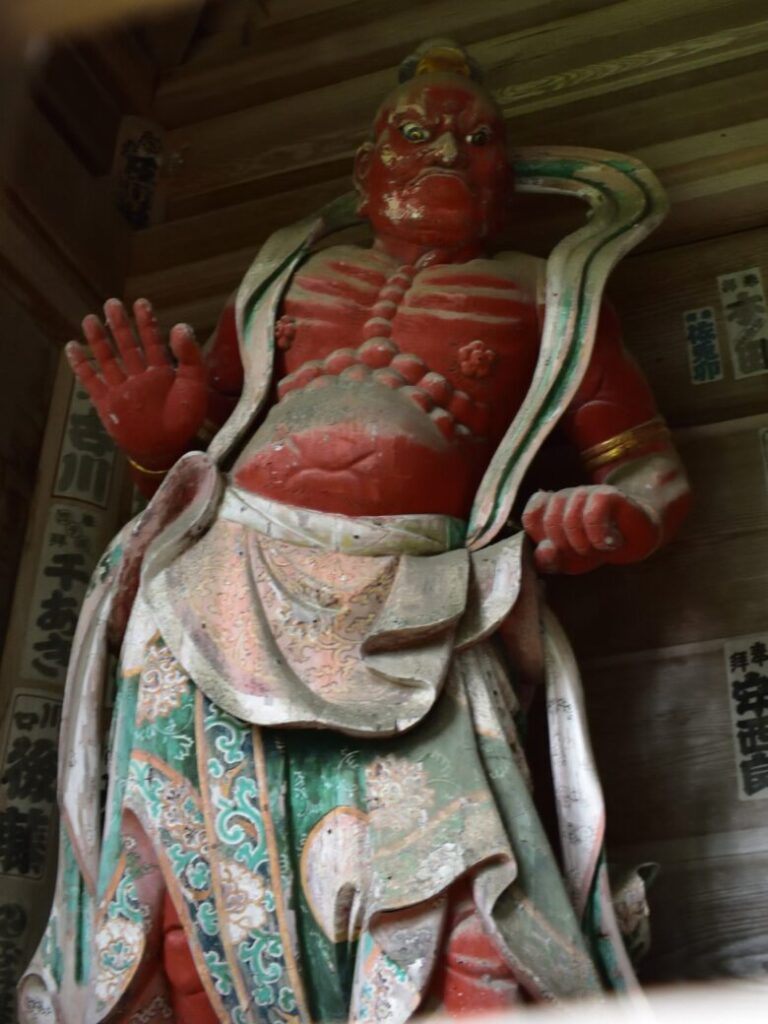
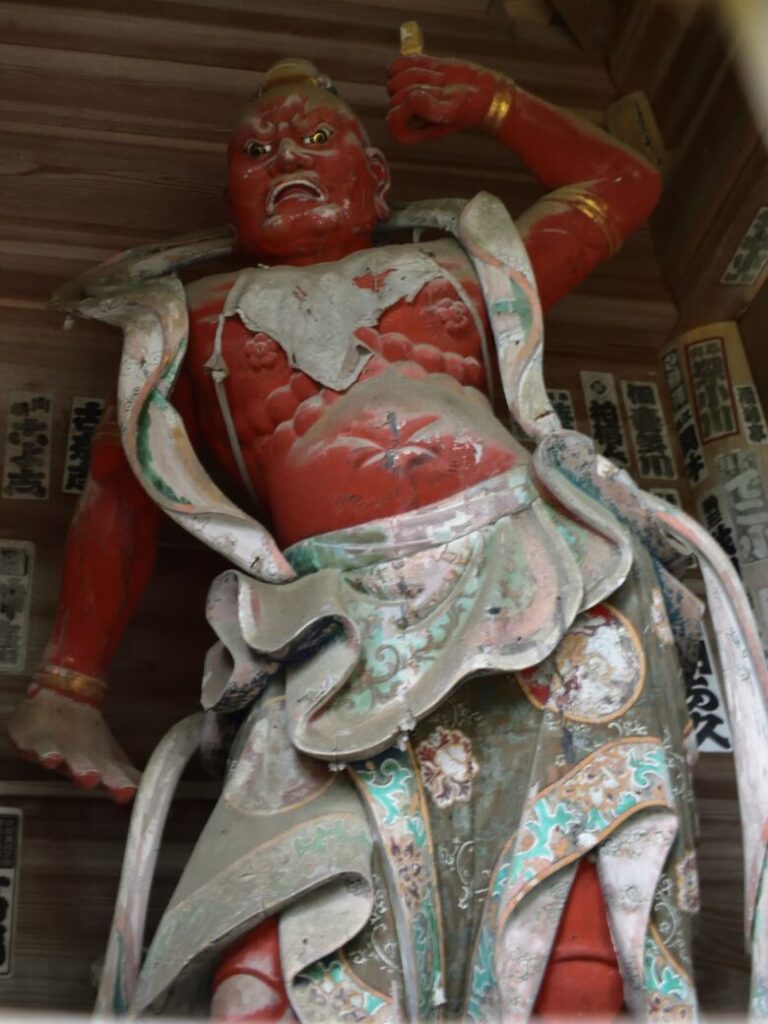
The cliff to the right of the Niomon Gate was once used for ascetic practices.
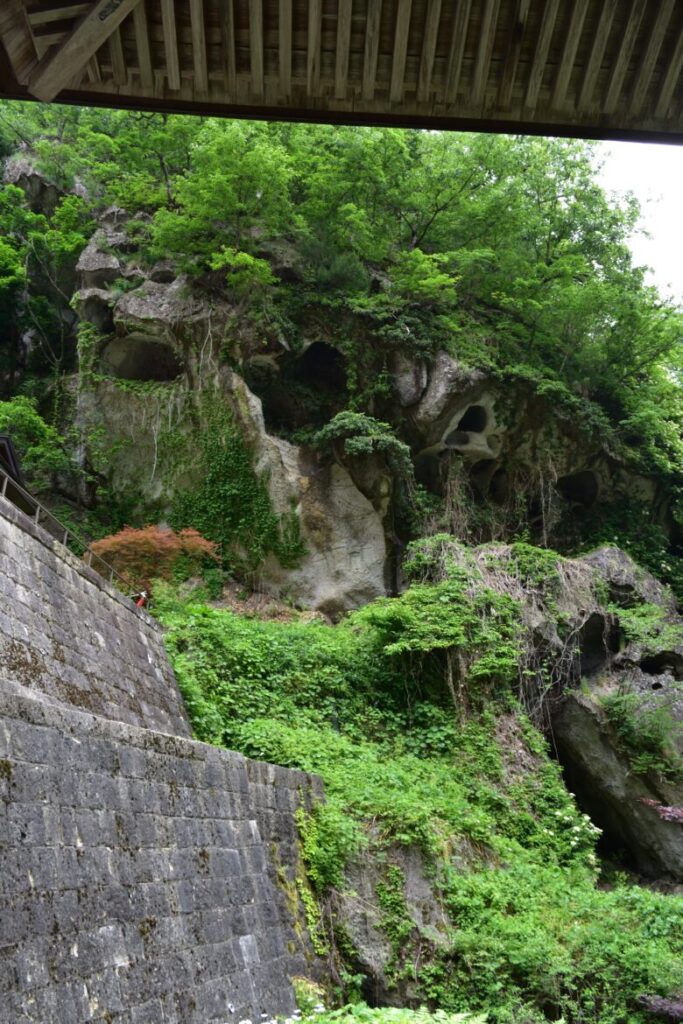
Kaisando-Nokyo-do, Nokyo-do, Godaido
With no ill intentions, we safely pass through the Niomon Gate and turn left before heading for the inner sanctuary, Godaido.
On the way, you will see the Kaisandō Hall, which enshrines the founder, Jikaku Daishi Ennin, and the Nokyō Hall, where sutra copying is done.
In the Nokyo-do Hall, sutras copied during the “four-year-long uninterrupted sutra copying process” are stored.
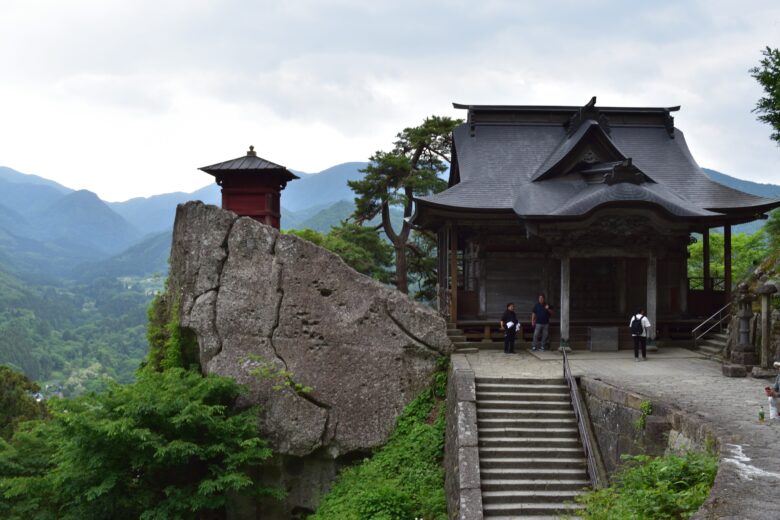
And here is the view from Godaido, which offers the best view of the temple.
It should have been quite a scary place, but perhaps I was paralyzed by all the wonderful views, or maybe I was not scared at all.

And then to the inner sanctuary.
Finally, we will head for the inner sanctuary.
In front of the inner sanctuary, there are a surprisingly large number of monks’ houses, even though they are located on the mountain.
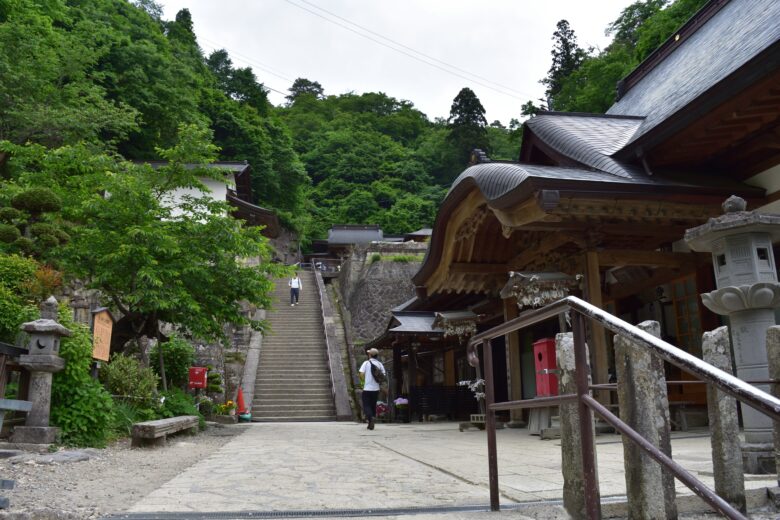
Yes, it is like “Machu Picchu, the City in the Air.
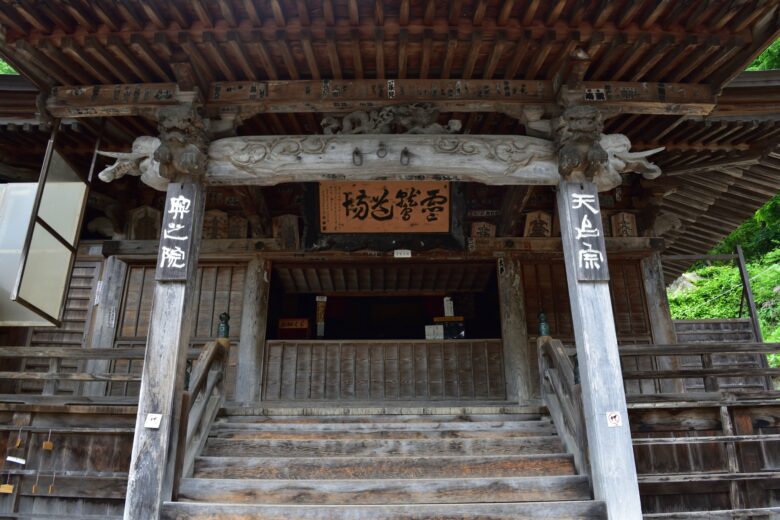
The main deity of the temple is the Sakyamuni Buddha and the Taho Buddha, both of which Jikaku Daishi carried with him during his training.
It is a sutra recitation center that does not use animal hair and uses stone ink and cursive brush strokes.
I finally arrived at the inner sanctuary.
I did it!
Conclusion
Climbing the 1015 stone steps must have purified me as well.
Nature is wonderful, but man’s love for the gods and Buddha is also amazing.
Driving video
I’ve posted a video titled “Yamadera Temple & Safflower Road driving during the autumn foliage season” on YouTube, so please check it out.
